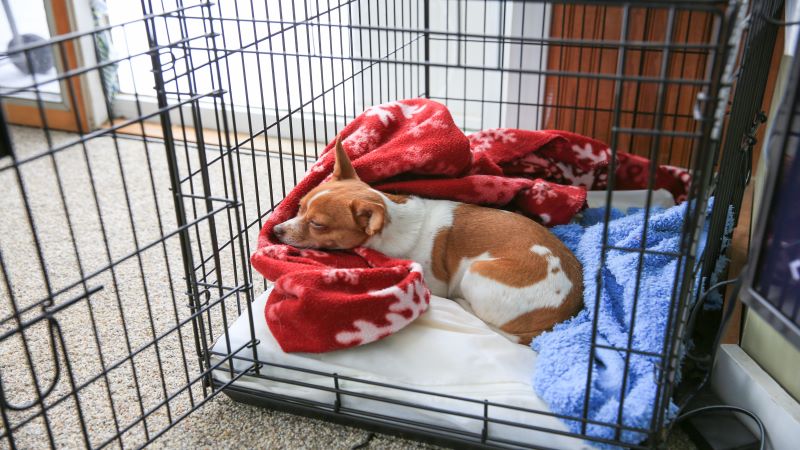“Oh, no! Fido ate one of my favorite shoes!” Unsupervised and unconfined dogs may get into trouble by destroying household items, such as wires, molding or pillows. Not only is this expensive because you may need to replace or fix items, but you may also end up with a very sick dog and costly, unexpected vet bills. Even with pet insurance helping to reimburse towards accidents such as this, you don't want your pet to have to go through the discomfort of passing a foreign object.
Managing your dog’s environment and integrating training into his routine is key to raising a healthy puppy or adding a new dog into your household. One way to manage your dog when you're not around to keep a close eye is through the use of a crate.
Why crate train your dog?
Even after your dog no longer needs to be crated when you are gone or when you cannot supervise, this life skill comes in handy. Having a crate trained dog makes it more likely that a vacation rental, relatives or friends will allow your dogs (who will be crated when you leave them unattended in a strange environment) to join you on your vacation! In addition, dogs sometimes need to be in a wall crate at the vet before and after special procedures. During an emergency situation, your pup may need to reside in a crate at evacuation shelters. Crate trained dogs experience less stress when they are confined during these types of circumstances!
Which dog crate should I buy?
The crate should be large enough for your dog to stand up and to turn-around. For puppies, you do not want the crate to be so large that the dog could potty in one side of the crate and still happily exist (nap or play) on the other side. Further, crating encourages den instinct and may help dogs become house-trained, as they may be crated between potty breaks outdoors. Dogs normally prefer not to go potty in the same places where they nap or eat meals.
How to crate train my dog?
Turn the crate into a happy place where treats and naps occur!
- Have the dog find “surprise” food (kibble or something more valuable) in the crate. Soon your dog will be checking out the crate whenever he walks by to see if food miraculously shows up! (Keep the crate door open during this “game.”)
- Feed meals in the crate.
- Treat your dog whenever your dog willingly goes into the kennel on his own.
- Have a special toy - that your dog may safely have unattended - that your dog is only allowed to have in the kennel. For example, a frozen kong stuffed with dry and canned food.5. Over time, start closing the crate door and then opening it when the dog is calm.
- Start with the kennel door open. Place the kong in the kennel. Your dog should poke his head into the kennel and may try to remove the kong. If the dog removes the kong from the kennel, take the kong and put it back in the kennel. Repeat if needed.
- Eventually your dogs will realize that he can only enjoy the kong if the kong remains in the kennel.
- At first, the dog may eat the kong with his head in the kennel and the rest of his body out of the kennel. In the next sessions, your dog will be more comfortable and will start eating the kong with his full body in the crate.
- After the dog willingly goes into the crate, use a command word such as “go kennel.”
- Increase duration of crating and gradually start leaving the room when the dog is crated.
- Do not open the crate door when the dog is whining or barking or when the dog is acting frantic. Wait for one second of silence and stillness and then open the door. This teaches the dog that only quiet, calm dogs are released.
How long will it take to crate train my dog?
Depending on your pup and how long you practice crating your dog, this could take anywhere from a few days to a few weeks. Being strict on not releasing your pup for whining or barking, not using the crate as punishment, and making the crate a "fun" place for your pup, will help to decrease how long it takes to successfully crate train your dog!

